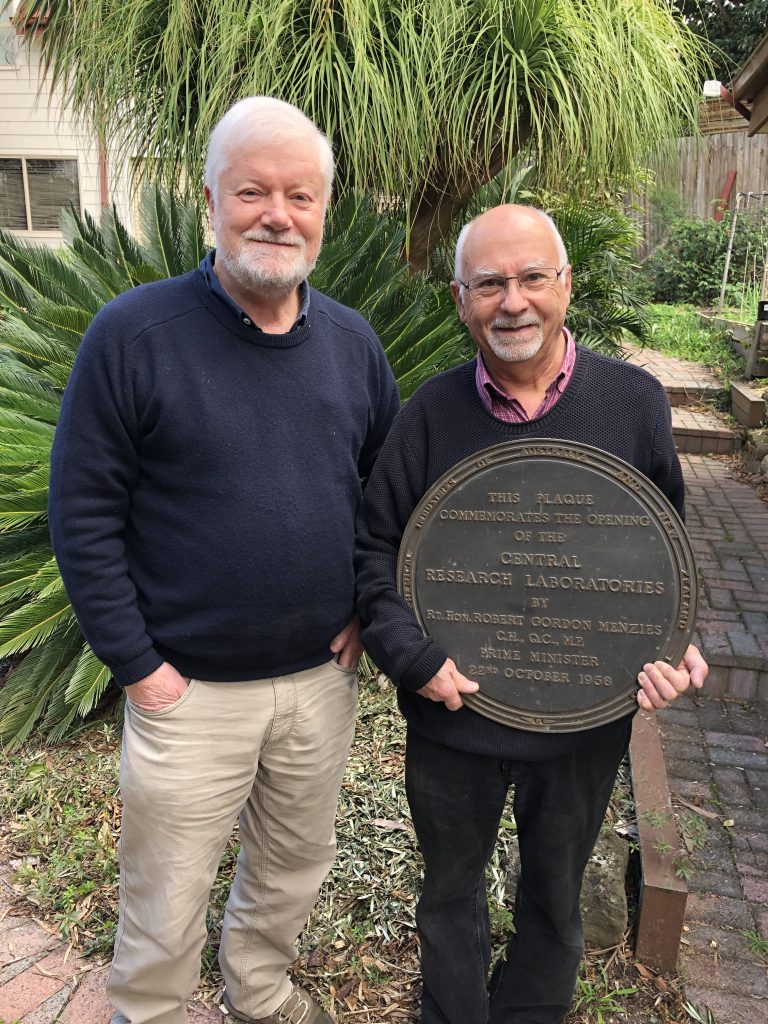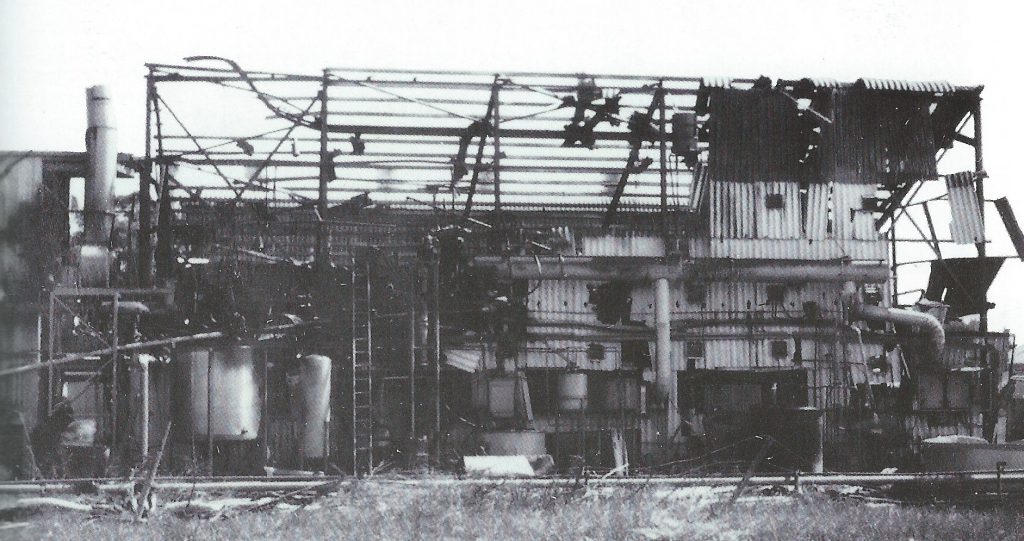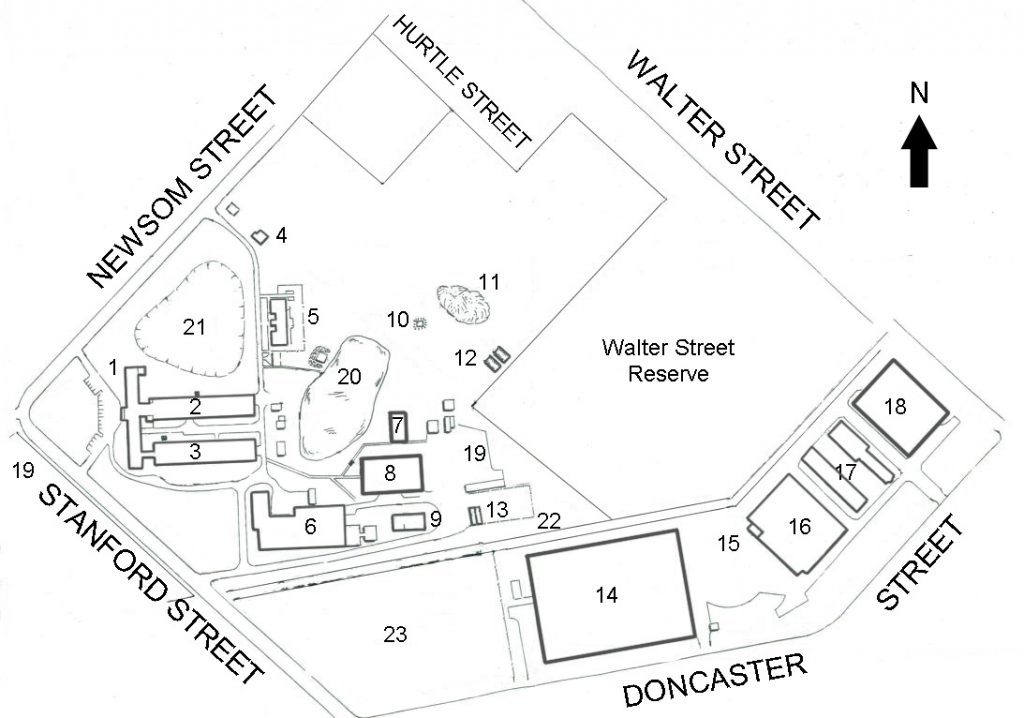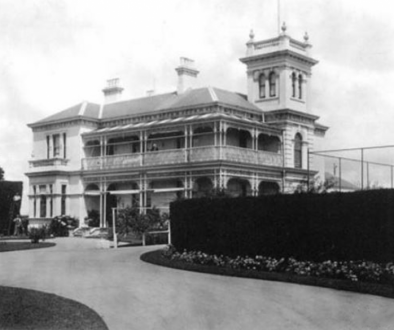Leading World Research in Ascot Vale
Did you know that Ascot Vale was the location of one of Australia’s first World Class research establishments? Opened in 1956, it revolutionized PVC production.
The ICI Australia Research Group in Newsom St Ascot Vale

The Central Research Laboratories was opened by Prime Minister (later Sir) Robert Menzies in 1956. The plaque, commemorating the opening has been presented to the Essendon Historical Society.
Charles Camera (right), who rescued the plaque when the Ascot Vale facility closed, presented the plaque to Hayden Williams of the EHS in May 2022.
World War II led to ICIANZ (Imperial Chemical Industries of Australia and New Zealand) to establish major manufacturing in Australia, supported by research facilities in Deer Park and later Sunshine.
“Dirk” Zeidler (later to become Sir David), who joined the company in 1952 from CSIRO, had much to do with the foundation of ICI Research Group and was very influential in its long term growth. Dirk’s principal tasks were to develop a viable and active research group and establish suitable laboratories for its work.

In April 1955 the ICI board approved the expenditure of £325.000 to establish modern research laboratories at Ascot Vale. The site chosen was located on the corner of Newsom, Stanford and Doncaster Streets, Ascot Vale near the Maribyrnong River. Originally part of Major George Newsom’s Myross Farm, it was known later as Twaddles Paddock. During the Depression it became known as Brandy Flat.
The land is in the flood plain of the Maribyrnong River and 75,600m3 of land fill was placed across the site and the adjacent Walter Street Reserve and Fairbairn Park. The soil was sourced from the former ICI House site at Nicholson Street Melbourne, Victorian Arts centre site, St Kilda Road, Royal Childrens Hospital site, Flemington Road and the former Southern Cross hotel site, Exhibition Street, Melbourne.
Construction of the Central Research Laboratories started in 1955 and was completed in June 1956 and officially opened on 23 Oct 1956. These were claimed to be Australia’s first major research laboratories.

ICI gradually developed the facility up to 1983. It featured laboratories, office buildings, radiation block, autoclave building, glass houses, engineering services building, workshops, stores and underground storage tanks.
The company was very proud of its gardens and the lake was thought to be fed by a natural spring. However, during a drought in 1966-67, the Board of Works discovered the water was in fact the result of a leaking water main. Bore water was used at first for the gardens during droughts but this eventually became too saline.

It wasn’t all business as usual – a large explosion occurred in December 1973 whilst manufacturing a chemical for the zinc processing industry. A laboratory fire occurred in 1967 and a major fire happened on 15 August 1980 when an unauthorized experiment was left on overnight. There was an armed robbery in May 1985. Of course, given its proximity to the river, the site was badly damaged by floods on 16 May 1974.
The first major invention was the Flame Ionisation Detector which was licensed worldwide and used in chromatographs to analyze chemicals and pollution. The formulation of chemicals for agricultural and veterinary usage was a major activity. Other research included PVC, polyesters, polythene as well chemicals for cleaning, rockets, automotive and mining uses.
Map of Central Research Laboratories, Ascot Vale


ICI was renamed Orica on 2 February 1998 and the facility became the Orica Central Research Laboratory.
The research site closed when the chemical industry became unfavorable for local manufacturing beginning in the 1970s. Previously, with high tariffs, small manufacturing plants could compete with very much larger and far more efficient overseas plants. Tariffs were reduced and then eliminated, and sea freight became very competitive. Many local plants were closed not only at ICI Australia but also at other local operations of overseas chemical giants such as Dow, Dupont and BASF. Many local manufacturers using locally made chemicals closed in textiles, footwear and leather. This reduced the need for local chemicals. In addition, some very ambitious and costly research projects at the ICI site failed to live up to expectations reversing earlier successes where developments were very profitable for ICI not only locally but internationally.
As a result, the cost of maintaining the site could no longer be justified by the expected benefits. Its sale was announced on 19 August 2003 for $35 million. Investment banking group Babcock & Brown and joint-venture partner engineering group BMD bought the site with plans for a low-rise medium-density residential development. In August 2009 Urbex bought out Babcock & Brown’s interest for $250 million and construction commenced of 400 new homes on 17 hectares.
ICI also had a Lightning Zips factory in Doncaster Street, Ascot Vale.
Sources: Charles Camera; Making the Future, A History of ICI Australia Research Group by K G Neill, September 1989; and Essendon Historical Society.



